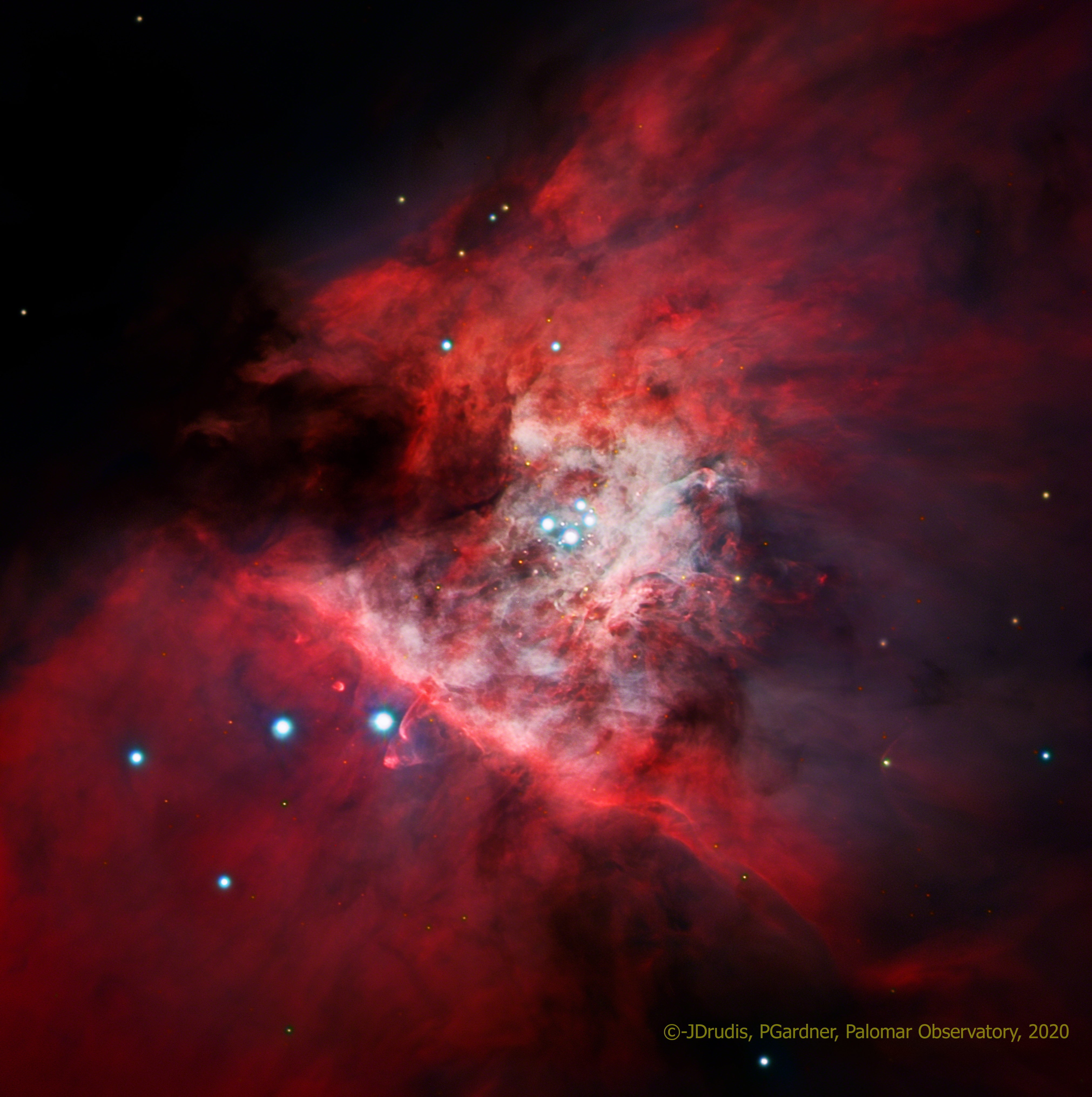Image Copyright: JDrudis, PGardner, Palomar Observatory/CalTech, 2020. Credits: Raw frames: Paul Gardner/Palomar Observatory/CalTech. Processing: Josep Drudis.
Click on the image for a full resolution version
This is an extreme detail of one of the most studied star forming regions that we can find in the sky: the Orion Nebula. Specifically, this image shows the so-called Trapezium area. This area is the brightest region in this difficult object. It was taken with a 60 inch telescope atop Mount Palomar, CA, USA. I want to thank Paul Gardner and the Palomar Observatory for supplying the raw frames for processing. The images taken with the Halpha filter were used as Luminance and not blended with Red, in order to get a better color balance.
A wider field mosaic, taken with a 20 inch telescope can be found here.
Additional Information
Object
Name(s): M42. Trapezium area
Type: Emission Nebula
RA: 05h 35m 16.5s
Dec: -05º 23’ 14”
Constellation: Orion
Size (arcmin): 3×3 arcmin
Magnitude: ND
Distance: 1,400 ly
Image
Date: 2014-02-11
Location: Palomar Mountain, CA, USA
Size (arcmin): 10.4×10.4 arcmin
Telescope: 60” f/8 Ritchey-Chrétien Reflector
Camera: (Brand not stated) 16803 (4096x4096pix)
Guiding: NA
Total exposure: 1 hour (Ha: 3x5min; RGB: 3x5min each)
Processing: CCDStack, Photoshop CC 2020
